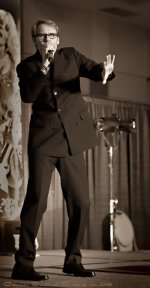jlw
Rangefinder camera pedant
The R-D 1 has a 1x finder magnification, although with a relatively short base length. It seems to focus the 50/0.95 OK as long as you pick a "focusable" area on the subject and take some care in lining up the two images. A longer RF base definitely would make it easier (it was noticeably easier with the same lens on my Canon 7s) but I think I'm gettin' by.
It was a bit hard to tell about percentages, because I also was shooting a lot of the time at pretty slow shutter speeds. I'm not always good at telling whether a picture is blurry because I misfocused, or because I or the subject moved during the exposure.
As I get more experience with it, I'll post an update.
It was a bit hard to tell about percentages, because I also was shooting a lot of the time at pretty slow shutter speeds. I'm not always good at telling whether a picture is blurry because I misfocused, or because I or the subject moved during the exposure.
As I get more experience with it, I'll post an update.



